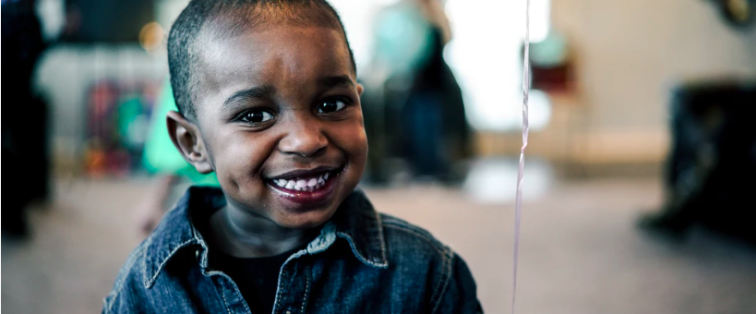Closing the Gap: Creating More Equity in Diagnosis of Autism Spectrum Disorder

I recently read a new study in Autism Research that examined data collected through the Centers for Disease Control and Prevention (CDC) and found that as many as one in four children who have documented signs and symptoms consistent with autism spectrum disorder (ASD) are currently undiagnosed. The study also found that those undiagnosed children are more likely to be non-white (black non-Hispanic, other non-Hispanic race, or Hispanic) than white.
That means that of the 1 in 59 children estimated to have ASD, 25% have not been given a formal diagnosis, with even greater percentages for non-white youth.
Disparities in Screening and Diagnosis
In my clinical practice as a developmental-behavioral pediatrician, I see all too often what happens when children aren’t diagnosed as early as possible: Without the appropriate supports, they struggle to communicate their needs effectively. They may have tantrums when things happen that are unexpected and sometimes they are expelled from schools that can’t meet their needs without greater clarification about what is contributing to these behavioral challenges.
Physicians and other clinicians diagnose ASD by observing a child and gathering history to determine if he or she has difficulty communicating socially and has restricted or repetitive behaviors or interests. There is no diagnostic test for ASD (such as a blood test) that we can use universally to identify all children at risk. But screening tests, which the American Academy of Pediatrics (AAP) recommends at 18- and 24-month well-child visits, can help pinpoint early signs and symptoms and provide an opportunity for physicians to discuss ASD concerns with parents and caregivers.
However, our research group found that the most commonly used screening test is not as good at identifying ASD in children of color and those from non-English-speaking homes. Therefore, it can be particularly challenging to accurately identify all children with ASD in a diverse population.
The under-diagnosis of ASD has important implications for the ability of children to equitably access autism-specific interventions. The AAP published updated guidelines about caring for individuals with ASD and emphasized the importance of early diagnosis and referral for services when intervention can have the greatest impact. However, the findings from CDC’s data demonstrate the ongoing challenge of equitably and accurately identifying all children with signs and symptoms of ASD.
Given these challenges and the limitations of our screening tool, how can we do better for these kids? Clinicians should broadly consider ASD risk in all children, particularly children of color, when caregivers raise concerns about social and communication skills and behaviors. While some families may share information with a particular frame (for example, interpreting a child’s difficulties transitioning between activities—a frequent challenge in ASD—as a discipline problem), clinicians have to broaden their interpretation of the concerns raised and include ASD as a potential explanation. Providers should refer children who screen positive or present with early signs of ASD for a comprehensive evaluation to determine if a diagnosis is indicated. Even when a screen is negative, we should consider an ASD diagnosis and further evaluation if a family member or clinician is concerned.
Consequences of Under-diagnosis
It is shocking to think that we may be missing as many as one in four children who present with signs and symptoms of ASD. Failure to recognize and label ASD has enormous and potentially lifelong implications for these children. If we fail to diagnose ASD in a child, it can limit their access to autism-specific services, such as behavioral supports, which have strong evidence for promoting developmental progress and reducing negative behaviors but are often only accessible with an ASD diagnosis. Additionally, when children are not accurately diagnosed, families often engage in a diagnostic odyssey to search for answers that can explain the challenges their children are experiencing. Failing to find answers—and an accurate diagnostic explanation—can add significantly to families’ stress. By the time families reach my office, many have been worried about their children for a long time, but have been been falsely reassured or given unsatisfying alternative explanations for their child’s challenges.
Creating More Equity
Children of color continue to suffer a legacy of under-diagnosis of ASD. While the factors driving this disparity are varied, the findings of this recent study demonstrate there is more work to be done to equitably identify and care for children with ASD. Providers and schools can do a better job of identifying ASD concerns in children of color, raising those concerns with families and referring children for evaluation and intervention. And a crucial piece of this puzzle is de-mystifying ASD among families and communities in order to reduce the stigma associated with the diagnosis.
As we look forward, my colleagues and I are working on multiple initiatives to help improve developmental and ASD screening to close this gap in diagnosis and connect children with critical services like Early Intervention and other community agencies to provide families with better support. If you’re interested in learning more about our next steps, I encourage you to contact me and check PolicyLab’s blog for updates that explore this problem and our proposed solutions.

